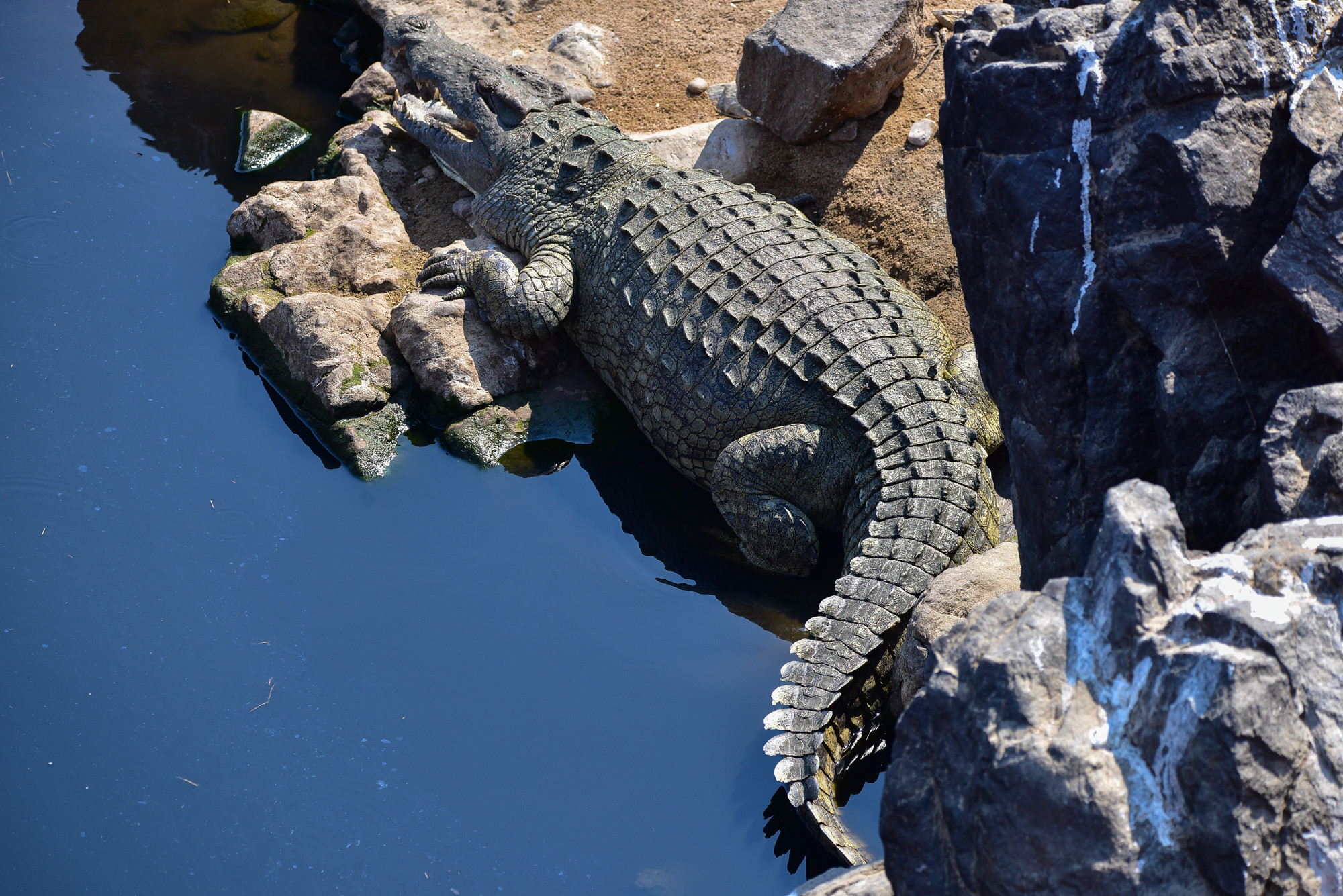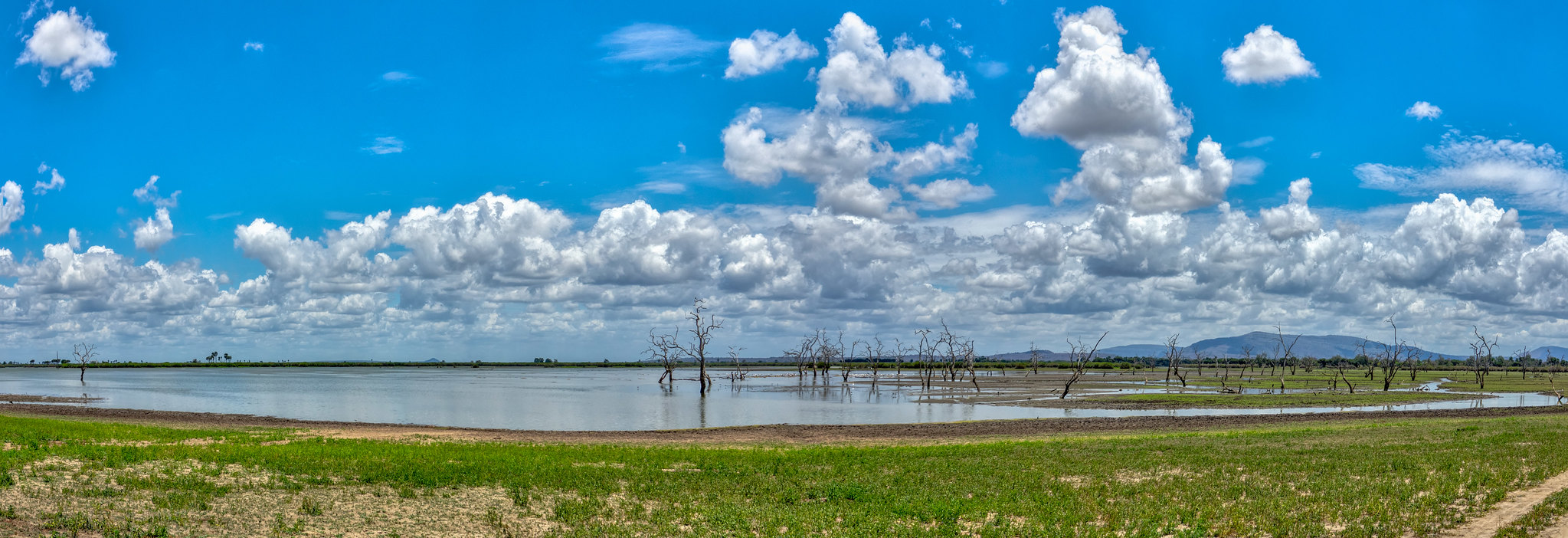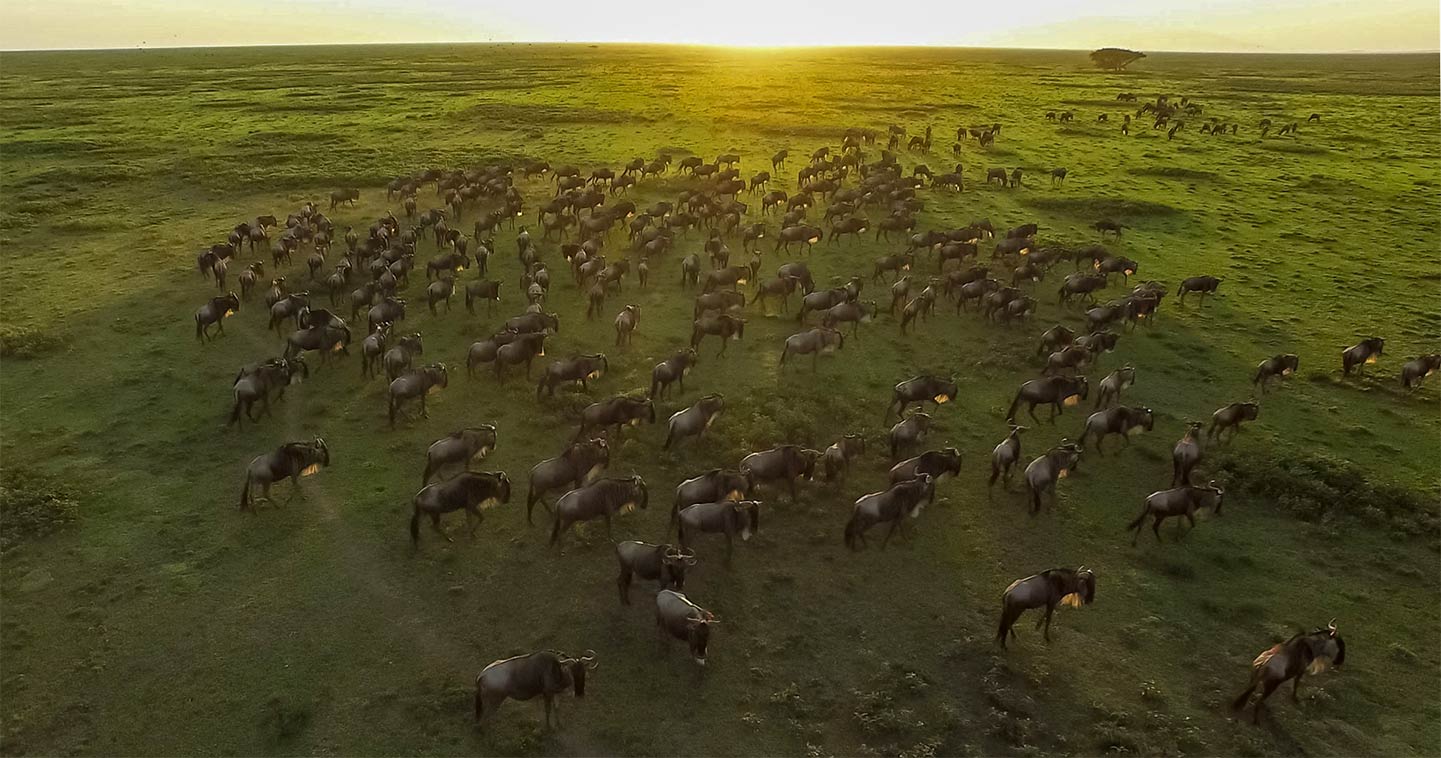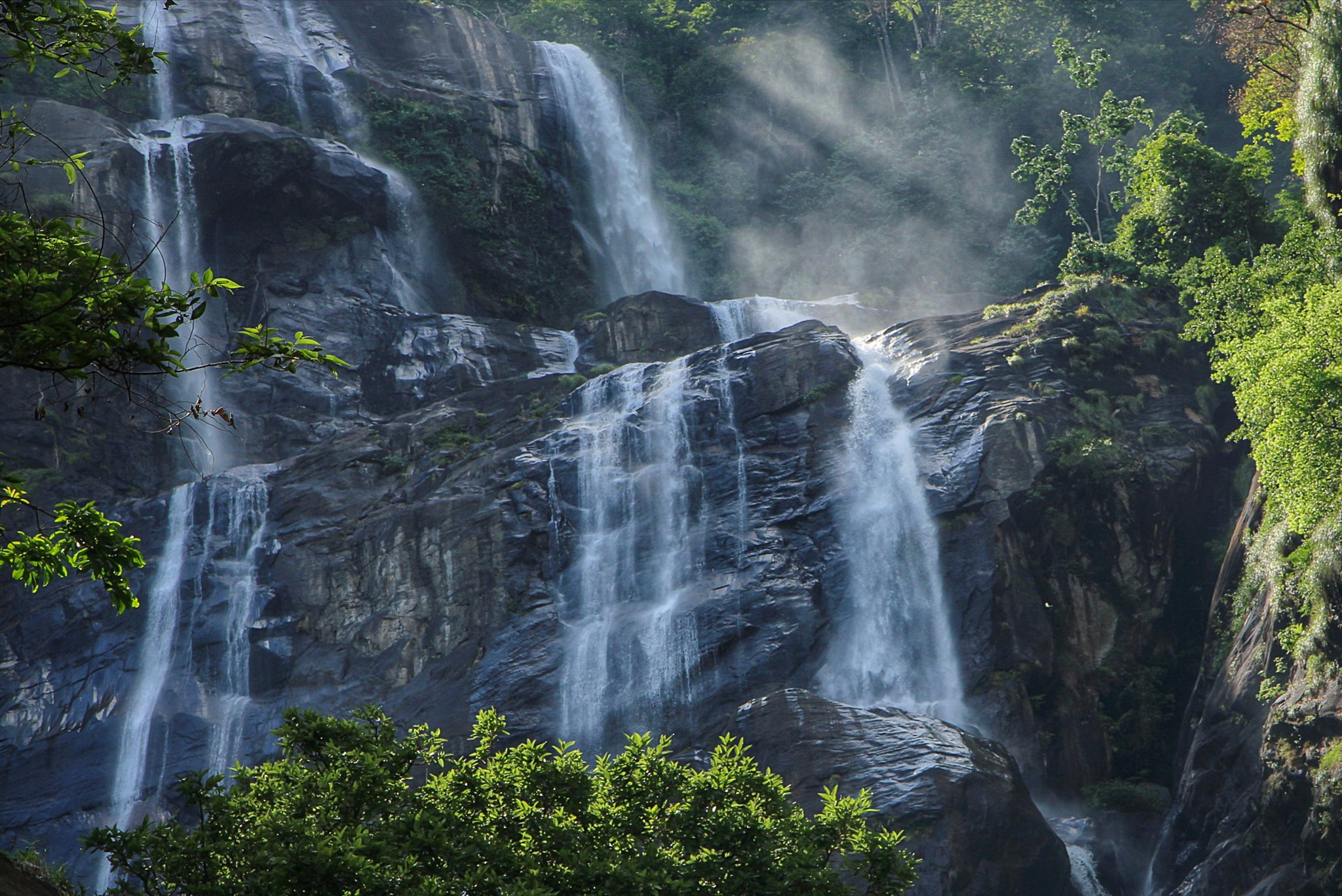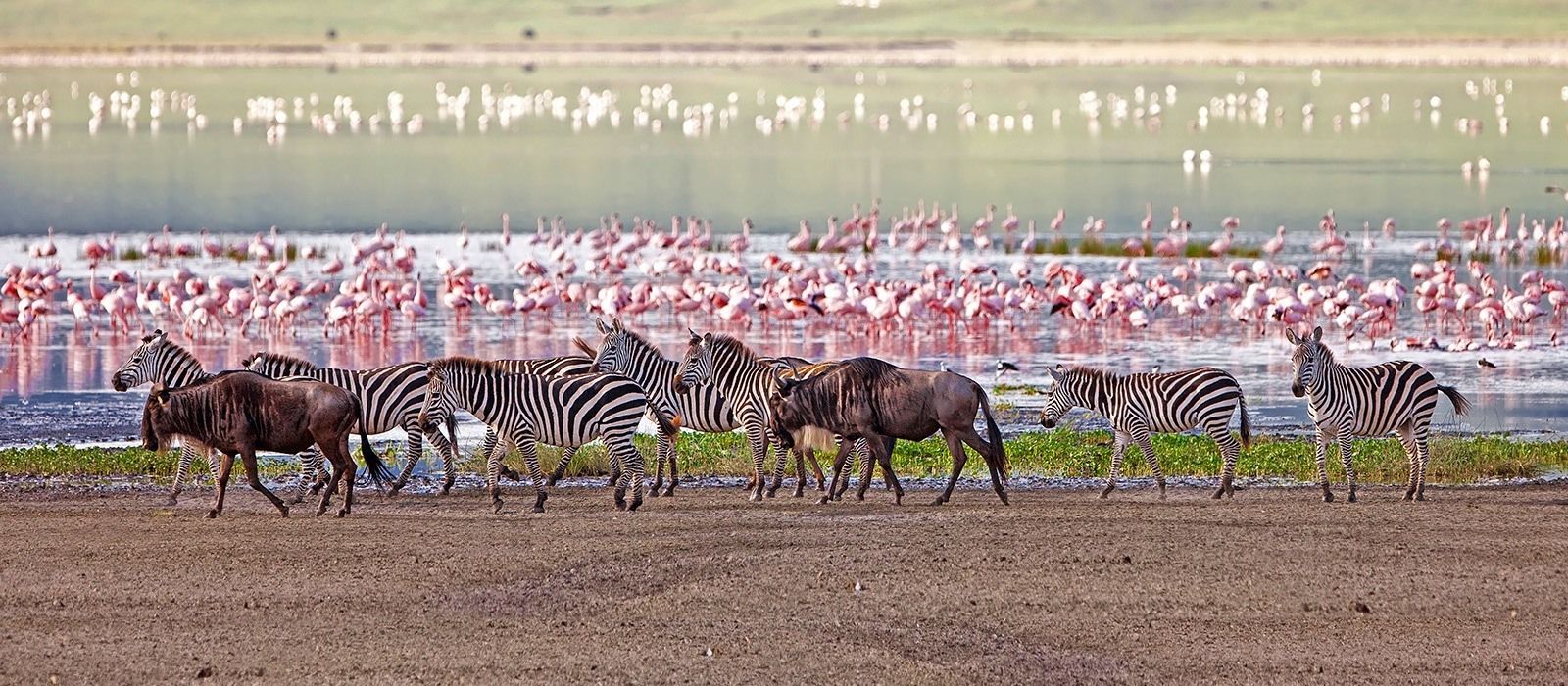Serengeti National Park
Tanzania Destinations
Throughout the year, the plains of the Serengeti heave with game. Two million wildebeest, zebra, Thomson’s gazelle and other plains game spend a year migrating across this iconic region, following the life-giving rain. Here in the Serengeti, the biodiversity is unmatched, while some of Africa’s greatest natural landmarks are also found in Tanzania: Mount Kilimanjaro, Africa’s tallest mountain, and the famed Ngorongoro Crater. It’s wildlife and exceptional natural diversity on a scale found nowhere else on Earth.
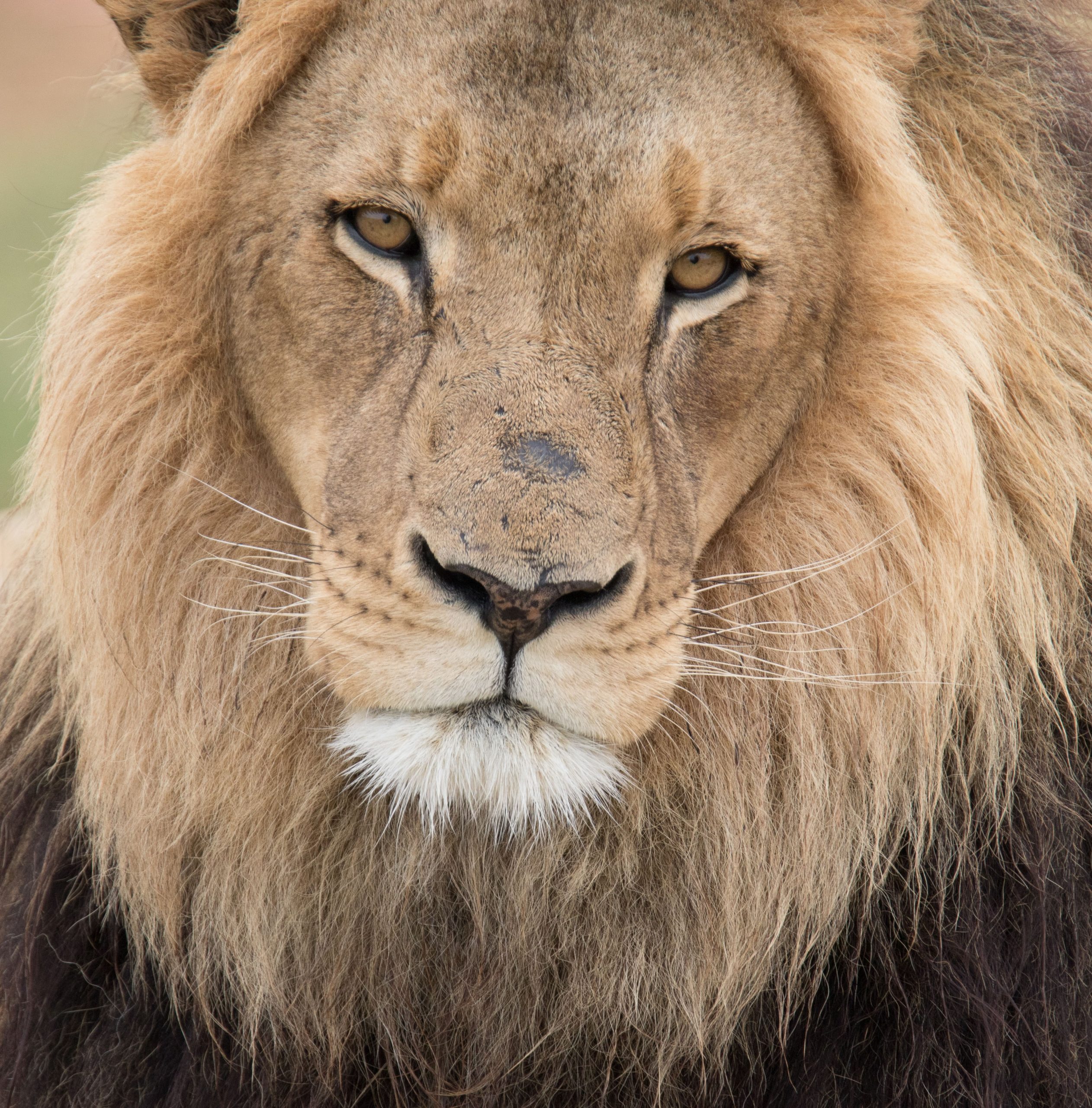
The Park can be divided into 3 sections. The popular southern/central part (Seronera Valley), is what the Maasai called the “serengit”, the land of endless plains. It’s classic savannah, dotted with acacias and filled with wildlife. The western corridor is marked by the Grumeti River, and has more forests and dense bush. The north, Lobo area, meets up with Kenya’s Masai Mara Reserve, is the least visited section.
Throughout the year, the plains of the Serengeti heave with game. Two million wildebeest, zebra, Thomson’s gazelle and other plains game spend a year migrating across this iconic region, following the life-giving rain. Here in the Serengeti, the biodiversity is unmatched, while some of Africa’s greatest natural landmarks are also found in Tanzania: Mount Kilimanjaro, Africa’s tallest mountain, and the famed Ngorongoro Crater. It’s wildlife and exceptional natural diversity on a scale found nowhere else on Earth.
The Serengeti National Park in Tanzania was established in 1952. It is home to the greatest wildlife spectacle on earth – the great migration of wildebeest and zebra. The resident population of lion, cheetah, elephant, giraffe, and birds is also impressive. There’s a wide variety of accommodation available, from luxury lodges to mobile camps. The park covers 5,700 sq miles, (14,763 sq km), it’s larger than Connecticut, with at most a couple hundred vehicles driving around.
Two World Heritage Sites and two Biosphere Reserves have been established within the 30,000 km² region. It’s unique ecosystem has inspired writers from Ernest Hemingway to Peter Mattheissen, filmakers like Hugo von Lawick and Alan Root as well as numerous photographers and scientists
Serengeti National Park Facts
Serengeti National Park was established in the 1920s and officially declared as a national park in 1951. The park is one of the largest national parks covering around 14,750 square Kilometers. The park is one of the most visited national parks in Tanzania and holds many interesting facts. Few are enlisted below:
- The Serengeti National Park is one of the oldest eco-system on the planet.
- The park is home to 3 most dangerous and big cats i.e. Lions, Cheetahs, and Leopards.
- The national park is home to one of the best natural events in the world. The great wildebeest migration that takes place every year which includes some six million hooves cross the open plains, as more than 1,000,000 wildebeest, 200,000 zebra, and 300,000 Thomson’s gazelle join the trek for fresh grazing.
- The park is probably the cheapest one that enables a large number of herbivores as well as carnivores.
- 500 birds’ species are found in the park including ostrich, secretary bird, kori bustard, crowned crane, marabou stork, martial eagle, lovebirds, and many more.

